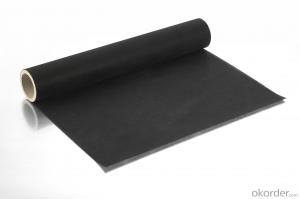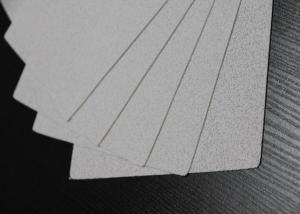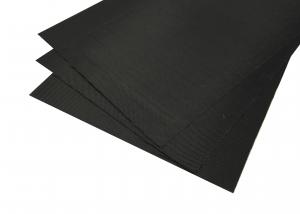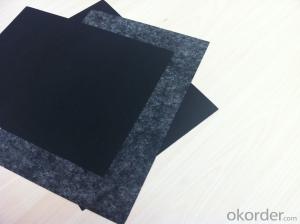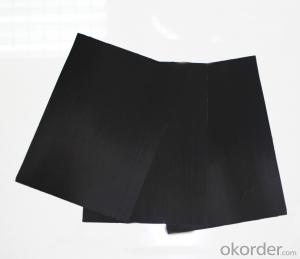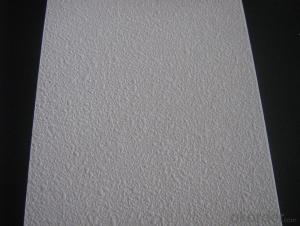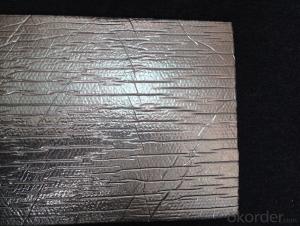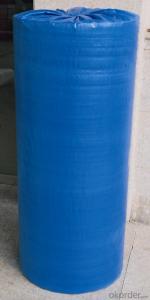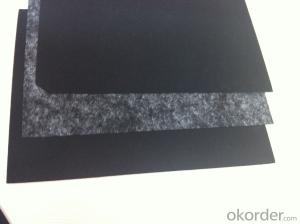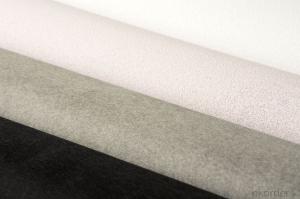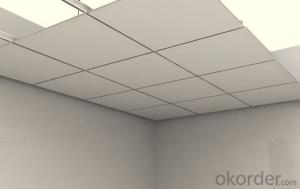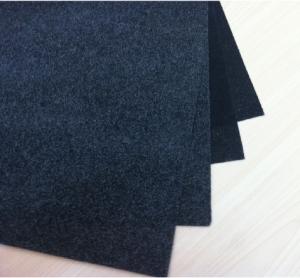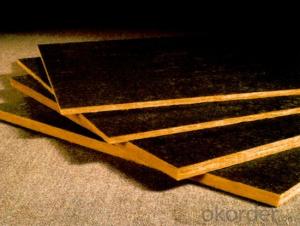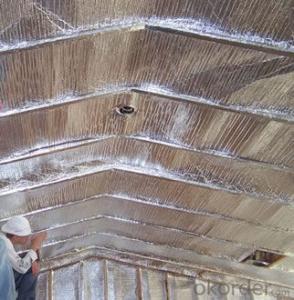BLACK FIBERGLASS TISSUE for ROOF and CEILING ACOUSTIC-50E
- Loading Port:
- Shanghai
- Payment Terms:
- TT OR LC
- Min Order Qty:
- 500 m²
- Supply Capability:
- 100000 m²/month
OKorder Service Pledge
OKorder Financial Service
You Might Also Like
Introduction of Fiberglass Tissue
Fiberglass Tissue is a kind of facing, which is made of by the white fiberglass tissue, and special production process.
Application of Fiberglass Tissue
Our black tissue are mainly used as facing for glass wool insulation, rockwool, mineral wool etc. Also fiberglass tissue facing is used under roof decking, under attic rafters, over existing attic thermal insulation, in floors, walls and crawl spaces, and in industrial and commercial buildings to block radiant heat coming into house through the roof during the summer and retain indoor heat generated during in winter
Advantage of Fiberglass Tissue
Light weight
• High manufacturing accuracy
• High strength
• Small inertia resistance
• Strong heat dissipation ability
• Good visual effect
Packing of Fiberglass Tissue
1. Waterproof paper then PVC shrinking Film
2. Water-Proof film only
3. Woven cloth
4. Kraft paper or Water Proof Film then Metal/wooden pallet
5. (Also as your request. )
Specification of Fiberglass Tissue
Specification | ||
ITEM | UNIT | VALUE |
Type | C | |
Weight | g/m2 | 65±5 |
Thickness | mm | 0.40 |
Tensile Strength MD | n/125px | ≥130 |
Tensile Strength XD | n/125px | ≥90 |
Fiber Diameter | µ | 9 |
Fire Resistant Property | B1 | |
Pictures of Fiberglass Tissue
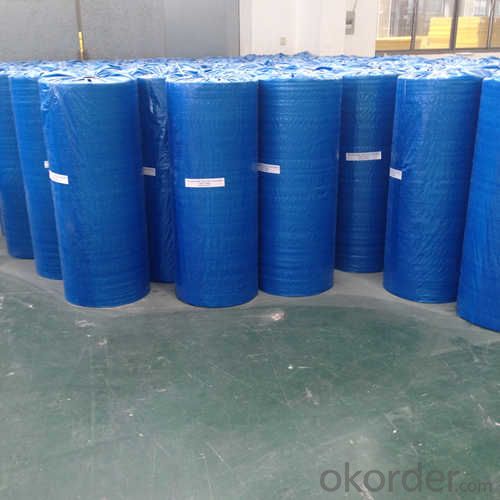

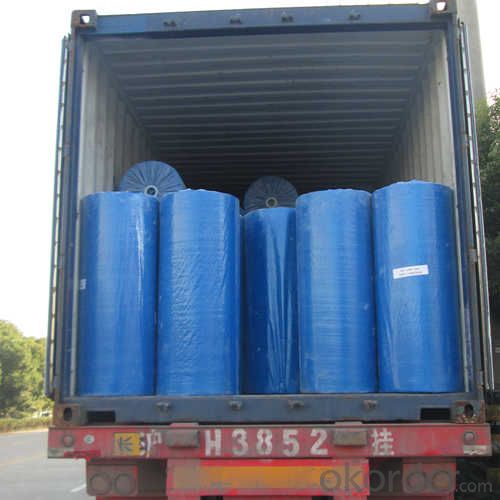
We have organized several common questions for our clients,may help you sincerely: 1. What is the storage condition? The Aluminum Foil Facing should be stored at room temperature and kept from wet and heat source. 2. How to guarantee the quality of the products? We have established the international advanced quality management system,every link from raw material to final product we have strict quality test;We resolutely put an end to unqualified products flowing into the market. At the same time, we will provide necessary follow-up service assurance. 3. How long can we receive the product after purchase? In the purchase of product within four working days, we will arrange the factory delivery as soon as possible. The specific time of receiving is related to the state and position of customers. Commonly 7 to 10 working days can be served.FAQ
- Q: Is it possible to utilize black fiberglass tissue in caravans or tents?
- <p>Yes, you can use black fiberglass tissue in your caravan or tent. It is often used for insulation and reinforcement due to its heat resistance and strength. However, it's important to ensure that it is installed correctly to avoid any potential health risks associated with inhaling fiberglass particles. Always follow safety guidelines and use appropriate protective equipment when handling fiberglass materials.</p>
- Q: This question asks for a comparison between black fiberglass tissue and other types of paper products, focusing on their characteristics and uses.
- <p>Black fiberglass tissue is distinct from other paper products due to its composition and properties. Unlike traditional paper made from cellulose fibers, black fiberglass tissue is made from fine glass fibers, which are coated with a resin and then dyed black. This material is known for its high strength, durability, and resistance to heat and chemicals. It's often used in applications requiring these specific properties, such as in electrical insulation, high-temperature filtration, and as a reinforcement material. In contrast, other paper products like standard printing paper, tissue paper, or cardboard are made from wood pulp and are not designed for such specialized uses. They are more suited for everyday uses like writing, packaging, and hygiene.</p>
- Q: This question asks for advice on how to maintain the cleanliness and integrity of black fiberglass tissue.
- <p>To prevent your black fiberglass tissue from getting dirty or damaged, follow these tips: 1. Keep it covered when not in use to avoid dust and dirt accumulation. 2. Use a soft, damp cloth to gently clean the surface, avoiding harsh chemicals that could damage the material. 3. Store it in a cool, dry place away from direct sunlight to prevent fading or warping. 4. Handle the tissue with clean hands or use gloves to avoid transferring oils or dirt. 5. Regularly inspect for any signs of wear or damage and address them promptly to prevent further deterioration. By taking these precautions, you can prolong the life and maintain the appearance of your black fiberglass tissue.</p>
- Q: Is it possible to recycle black fiberglass tissue in landfills?
- <p>Black fiberglass tissue, like other types of fiberglass, is not typically recycled in landfills. Landfills are not designed for recycling, but rather for the disposal of waste. Fiberglass is a composite material that is difficult to recycle due to its complex composition and the presence of resins that can make it challenging to separate the glass fibers from other components. Specialized recycling facilities are required to process fiberglass, and even then, the recycling process can be energy-intensive and costly. Therefore, black fiberglass tissue is usually not recycled in landfills and is instead disposed of as solid waste.</p>
- Q: Is it possible to substitute traditional wooden flooring with black fiberglass tissue in a residential setting?
- <p>While black fiberglass tissue has properties that make it suitable for certain applications, it is not typically used as a direct replacement for traditional wooden flooring in homes. Fiberglass is more commonly found in industrial or marine settings due to its strength and resistance to moisture and corrosion. Traditional wooden flooring offers a warmth and aesthetic that fiberglass cannot replicate. However, for specific uses where durability and resistance to water are needed, fiberglass could be considered, but it would require professional consultation to ensure it meets safety and structural requirements.</p>
- Q: How does fiberglass facing improve insulation?
- Fiberglass facing improves insulation by providing an additional layer of protection to the insulation material. The facing acts as a barrier, preventing air and moisture from entering or escaping the insulation. This helps to maintain the desired temperature inside the insulated space, as well as preventing the growth of mold or mildew. Additionally, the facing enhances the durability and strength of the insulation, making it more resistant to damage and ensuring its longevity. It also enhances the fire resistance of the insulation, providing an added layer of safety. Overall, the fiberglass facing improves insulation by enhancing its thermal performance, moisture resistance, durability, and safety.
- Q: Is it possible to utilize black fiberglass tissue within the interior of a car?
- <p>Yes, black fiberglass tissue can be used in car interiors. It is known for its strength, durability, and lightweight properties, making it suitable for various interior applications such as decorative panels, structural components, and even certain types of trim. However, it's important to ensure that the material meets safety standards and is properly treated for any potential health concerns related to fiber exposure.</p>
- Q: Is not the multi-layer membrane waterproof, the bottom of the membrane should use glass fiber mats?
- We project two layers of SBS membrane waterproof, is not just use PY on the line
- Q: What distinguishes black fiberglass tissue from other types of tissues in terms of color, material, and usage?
- <p>Black fiberglass tissue is a type of non-woven fabric made from black fiberglass fibers, known for its high tensile strength, heat resistance, and chemical stability. It differs from other tissues primarily in color, as most tissues are white or natural-colored. Additionally, black fiberglass tissue has unique properties such as resistance to UV light, making it suitable for outdoor applications. It's often used in construction, automotive, and electrical insulation, whereas other tissues might be used for cleaning, medical purposes, or as a base for hygiene products.</p>
- Q: Is it possible to utilize black fiberglass tissue as an insulating material in construction?
- <p>Yes, black fiberglass tissue can be used for building insulation. It is a type of insulation material known for its thermal and acoustic insulation properties. Black fiberglass is made from glass fibers and is often used in construction for insulating walls, roofs, and floors. It helps to reduce heat transfer, thereby improving energy efficiency and comfort within the building. However, it's important to note that proper installation and safety precautions are necessary due to the potential health risks associated with fiberglass, such as skin and respiratory irritation.</p>
Send your message to us
BLACK FIBERGLASS TISSUE for ROOF and CEILING ACOUSTIC-50E
- Loading Port:
- Shanghai
- Payment Terms:
- TT OR LC
- Min Order Qty:
- 500 m²
- Supply Capability:
- 100000 m²/month
OKorder Service Pledge
OKorder Financial Service
Similar products
Hot products
Hot Searches
Related keywords
